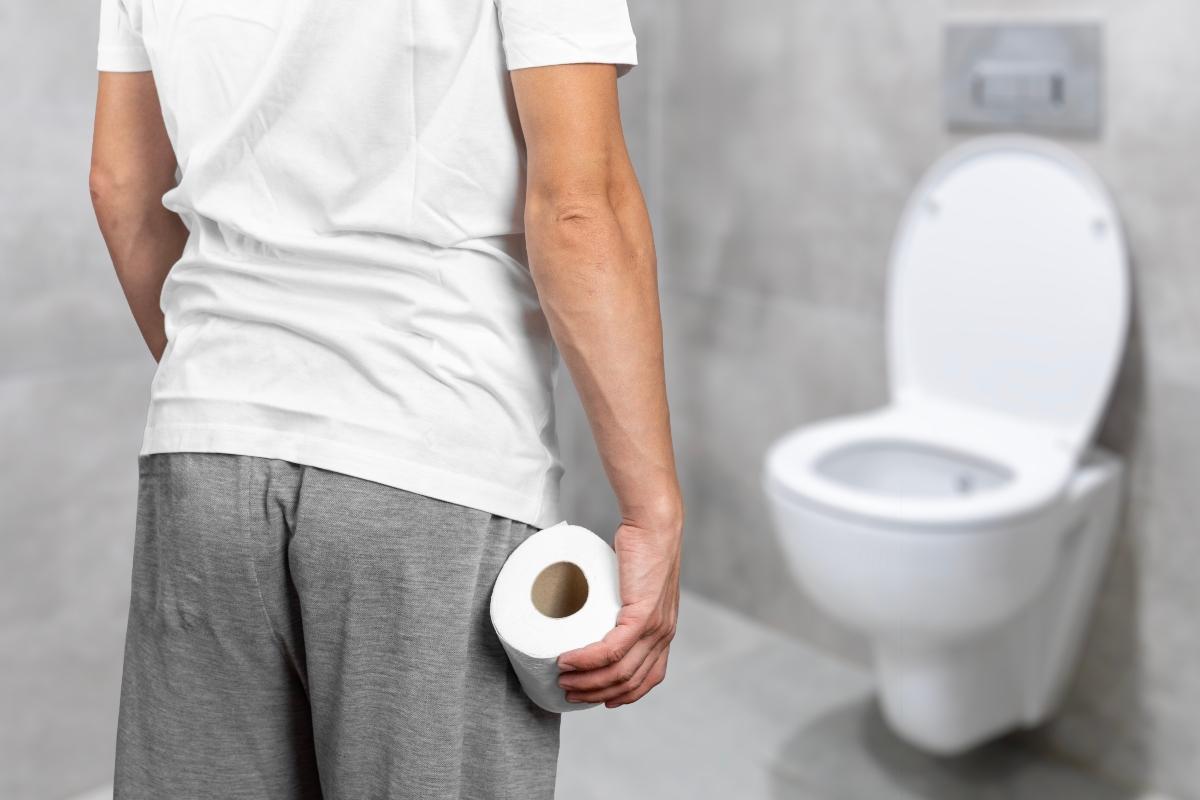New evidence-based guidelines for the management of chronic constipation find: "drink and increase fiber" is not enough.Here's what the research says, which foods really work and how to implement them into your daily life.
Constipation: "More water, more glass" is not enough!Here are the new guidelines
Graduated from Human Nutrition, Dietetics, Exercise, Practice, Dietetics in Practice and Independent Outpatient Practice as a Personal Trainer
Professional Profile - in the short term: In the short term: new diet and new lifestyle to prevent heartburn
- What we know today about constipation
- functional food
- Supplements and probiotics: when and how to use them
- Practical strategies for daily application
- No longer recommended as a first choice
- Evidence review and limitations
In summary: new dietary and lifestyle approaches to combat chronic constipation
Evidence-based guidelines
The latest guidelines, developed by a research team from King's College London and published by the British Dietetic Association, represent the first systematic and comprehensive analysis of scientific evidence and management of chronic constipation.
Starting from more than 75 controlled clinical studies, experts listed 59 specific recommendations that are not limited to the classic "increase fiber and water".
Paradigm Shift: Not all strings are created equal
The guidelines point out that the general recommendation of "high fiber" is not sufficiently evidenced in chronic constipation: which is most often the case:
- "Uas" fiber
- In what food context
- Along with: water, movement and intestinal microbiota.
Food and intake in concrete proof
Among the most preferred nutritional interventions is daily consumption of:
- rye bread
- mineral water with a high fixed residue
- Psyllium Supplement
- Magnesium oxide
- Chose the invoice.
Note: optional.
How to apply in daily life
The new racket also sees practical applications;IMPORTANT:
- Ice in your diet
- Sinthani hydration
- establish a bowel routine
- Join the daily movement.
The plan is not only clinical, but also self-management.
What we know today about chronic constipation
Chronic constipation - defined as bowel activity three times a week - affects only ten people per decade and is related to quality of life rather than physical discomfort.
Under the new guidelines, it is acknowledged that many traditional treatments are based on little solid evidence.
The research background shows that many studies have been conducted, but most have limitations such as small samples, limited time periods, focusing on individual foods rather than whole foods.
So, it's important to translate as a result of a "uneasy" unable to complete the butterflies ", but as a public disease
- The consistency of the foot
- effort and feeling of incomplete license
- Intestinal motility
- microbiota composition
The new guidelines aim to provide a more nuanced approach that goes beyond simple "eat fiber" advice.
Foods that really work
The most effective recommendations—based on moderate or strong evidence—concern specific foods:
- Kiwi: Fruit highlights indicated in the guidelines: At least two kiwis a day (or without the skin) can increase spontaneous discharge and improve stool flexibility.Due to the content of fiber, water and other nutrients, kiwi now occupies a leading role
Rye bread: Not just any bread, but a type of whole grain rye that provides a certain fiber (arabinoxylan) and appears to promote intestinal motility better than white bread.
- Mineral water with a very high content: hydration is important, but in this case it refers to a lot of water rich in minerals such as magnesium and sulfur, which promote gentle osmotic and improve weak function.
These elements - integrated in a balanced diet - should be better than the generic advice "more fiber and water" when dealing with chronic constipation.
Supplements and probiotics: when and how to use them
The guidelines also include 20 recommendations for probiotics, 15 for specific fibers, 5 for magnesium, 2 for senna, 2 for plums, 3 for kiwi (as a supplement or food), 2 for rye bread and 5 for mineral water.
- Psyllium: It is among the few supplements with consistent evidence in chronic constipation: it forms a gel that increases the volume of faeces and improves consistency.
- Magnesium OxIde: It acts as an OSmotic Laxively and is shown in the useful products, but with caution (if it damages the distribution functions).
- Individual probiotics: Not all probiotics are created equal: studies show that only certain strains at the appropriate dose and duration show benefits in reducing transit time and improving symptoms.However, the literature is still limited and more research is needed.
- Senna: Although it has been traditionally used as an herbal laxative, current evidence does not support its use as a first-line diet.Guidelines do not recommend its use as first-line dietary treatment.
Additionally, "natural" does not mean "risk-free," so it's important to evaluate supplement use with a medical professional.
Practical strategies for everyday use
The new instructions are not only theoretical: they suggest a practical and personal method of improving the regularity of the Bowel.
Some operational points:
- Daily routine: try to go to the bathroom at the same time every day (eg after breakfast) and reserve a quiet moment without rushing.
- Functional breakfast: Yoghurt or Kefir + 2 Kiwis + 2 kiwis + rye + rye bread - an example of a quick combination of recommended foods.
- Good hydration: drinking water every day, as much water as possible, and control the company for magnesium and sales.
- Moderate physical activity: Walking 20-30 minutes a day increases intestinal motility and helps "keep the intestines moving."
- Monitoring and modification: Tracking the frequency of bowel movements, sewage consistency (Bristol scale), straining, swelling.This helps to evaluate the effectiveness and modulation of the nutritional intervention.
- Consult a professional: If there is no improvement after 4-6 weeks, it is recommended that a doctor or diet evaluate other causes or intervene in a more detailed way.
What is not recommended as a first choice?
The new guidelines push us to rethink some of the overall paradigms:
- The advice to "eat more fiber" is not enough for chronic constipation.
- Overall hydration (regardless of water quality) is no longer the only answer: it's a combination of food, supplements and lifestyle.
- Routine use of stimulant herbal laxatives (e.g. senna) is no longer recommended as a first-line treatment for nutrition.Their use remains within specific clinical contexts.
In short: avoid generic and "one size fits all" approaches, preferring a plan tailored to symptoms, individual needs and observed results.
Contexts to consider and limitations of the evidence
While these guidelines are an important step in assessing limitations:
Many involve studies of limited size and short duration, focusing on a single food rather than a complex diet.
- Everyone reacts the same way: tolerance and food preferences play an important role
- The basis of the Conspitation Censpation can be possible: what can be the pelvic floor in these cases, no weekend is not enough.
- More research is necessary to confirm the effectiveness of supplements and probiotics, to define the correct doses and intervention periods.The guidelines identify 12 researchers in this area.
A new nutritional reminder for chronic obesity represents a real leap in quality:
Integrating into daily life - Choosing related tools by piercing with natural materials through Kiwis, Rye Fruits - Enables clays to improve physical performance.
However, intervention must be personalized, monitored and coordinated with a health care professional, especially in the presence of persistent or complicated symptoms.








